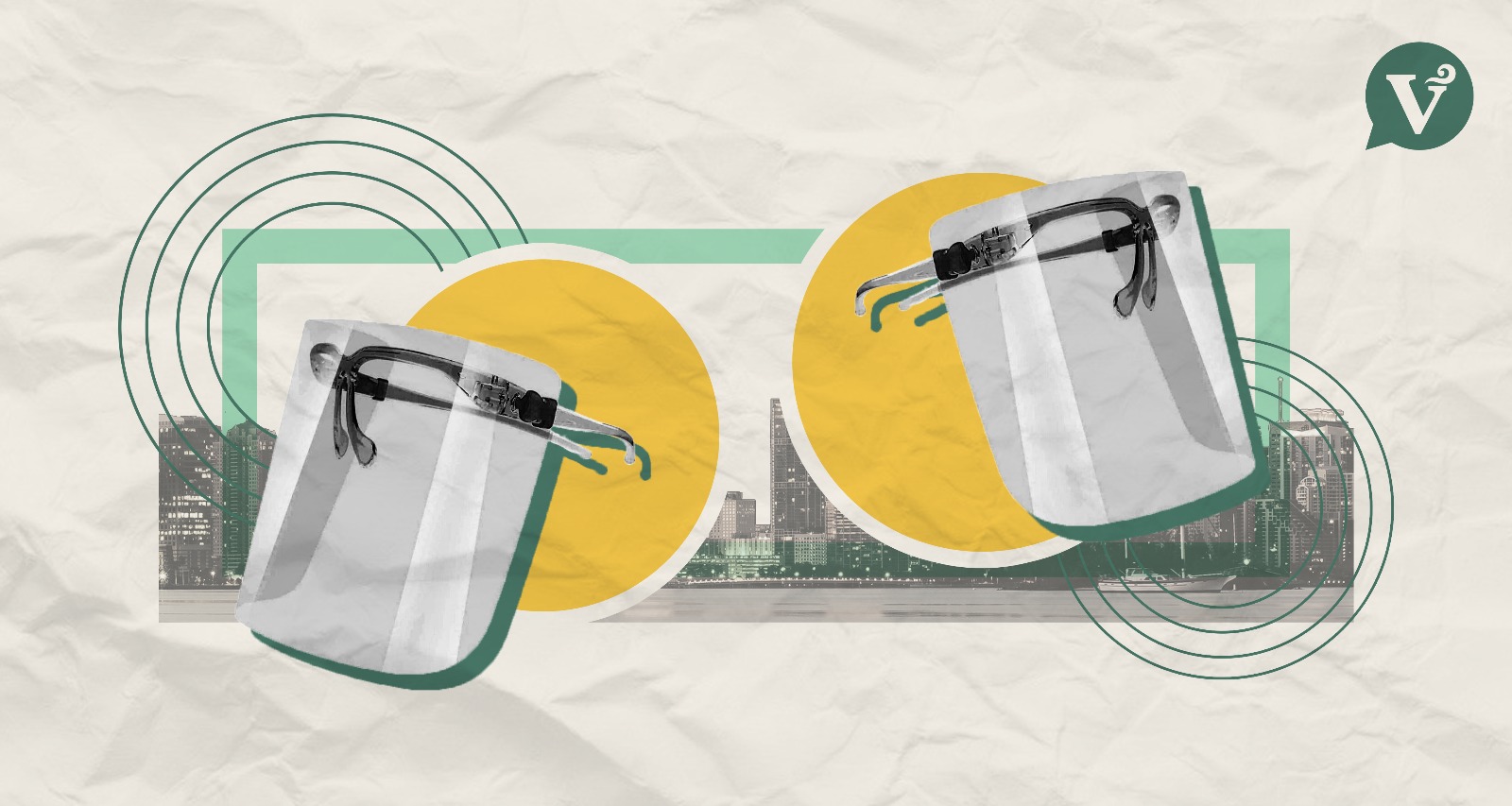
The Philippines has a face shield conundrum.
It has been six months since the government started requiring Filipinos to wear face shields on top of face masks when going out in public.
Face shields were initially only required by the Inter-Agency Task Force (IATF) on Emerging Infectious Diseases in public transportation and inside malls and other commercial establishments.
The revised policy to include the general outdoors came after the country experienced a surge in infections in December 2020 as quarantine restrictions eased and more people went out during the holiday season.
Since then, calls to abolish the face shield requirement have been gaining traction.
Earlier in June, Manila Mayor Franciso “Isko Moreno” Domagoso appealed to the national government to stop requiring the public to wear face shields.
“Ang face shield ay dapat ipatigil nang i-require sa general population at gamitin na lamang sa ospital upang makabawas sa gastusin at intindihin ng taumbayan,” he said.
“Tayo na lang yata sa buong mundo ang nag-rerequire ng face shield sa kalsada. Dapat pag-isipan uli ito. Marami na tayong natutunan. We should adjust.”
His statements were met with resistance by the IATF and other government officials.
Palace spokesman Harry Roque claimed that wearing a face mask, a face shield and observing social distancing provides protection from Covid-19 almost equal to that provided by vaccines.
“So sa akin po, sa siyensiya may basehan po iyan, sa gastos bagamat nagastusan po ang ating mga kababayan, e halos lahat naman po mayroon nang face shield so wala na pong extra gastos po iyan,” he said.
Former Covid-19 National Task Force adviser Dr. Anthony Leachon also backed the face shield requirement, citing a Lancet study which found that aside from wearing face masks, the eye protection face shields provide “could incur additional benefit” against possible Covid-19 contraction.
How effective are face shields?
According to the US Centers for Disease Control and Prevention (CDC), face shields generally offer only eye protection and the gaps alongside the face may allow respiratory droplets to enter.
When choosing a face shield, it should wrap around the sides of the face and extend below the chin, according to the CDC. But this is only based on limited available data that suggest face shields are better at protecting against respiratory droplets.
Covid-19 is transmitted from person to person via respiratory droplets expelled when an individual talks, sneezes or coughs.
Likewise, the World Health Organization (WHO) does not recommend face shields as a substitute for face marks and should only be considered as a last resort in the absence of a mask.
Combining face masks and face shields together, a laboratory model study found that the protection offered was actually “similar to surgical masks alone.”
More confusion
A Department of Health official on Wednesday said that individuals could take off their face shields when outdoors.
“Ang face shields kailangan naman talaga iyon kapag nasa indoor ka, kapag nasa mall ka or kapag may interaction ka na face-to-face,” Philippine treatment czar Leopoldo Vega said.
Outdoors, the risk of Covid-19 transmission is low, de Vega said.
“Kapag nasa outside naman kasi alam naman natin ang risk of transmission is very low at lalung-lalo na kapag naglalakad ka lang sa kalye o kaya nagtatrabaho kasi mag-a-affect iyong moist nito.”
Health Undersecretary Maria Rosario Vergeire likewise reiterated that face shields are required to be worn inside malls, schools, workplaces and other public spaces wherein the observance of the one-meter physical distancing is not possible and there is gathering of more than 10 people at the same venue at the same time.
Senate President Vicente Sotto III, who has long opposed the face shield policy, said on Thursday that President Rodrigo Duterte has ordered that face shields should only be used in hospitals.
Roque said the Inter-Agency Task Force on Emerging Infectious Diseases has recommended to Duterte to retain the face shield policy in “enclosed/indoor spaces of hospitals, schools, workplaces, commercial establishments (such as but not limited to food establishments, malls and public markets), public transport and terminals and places of worship.”
For now, Roque said Duterte’s “presidential policy” that ordered the abolition of the face shield requirement and only making it mandatory in hospitals remains in effect. C.D.A. Contreras

0 Comments